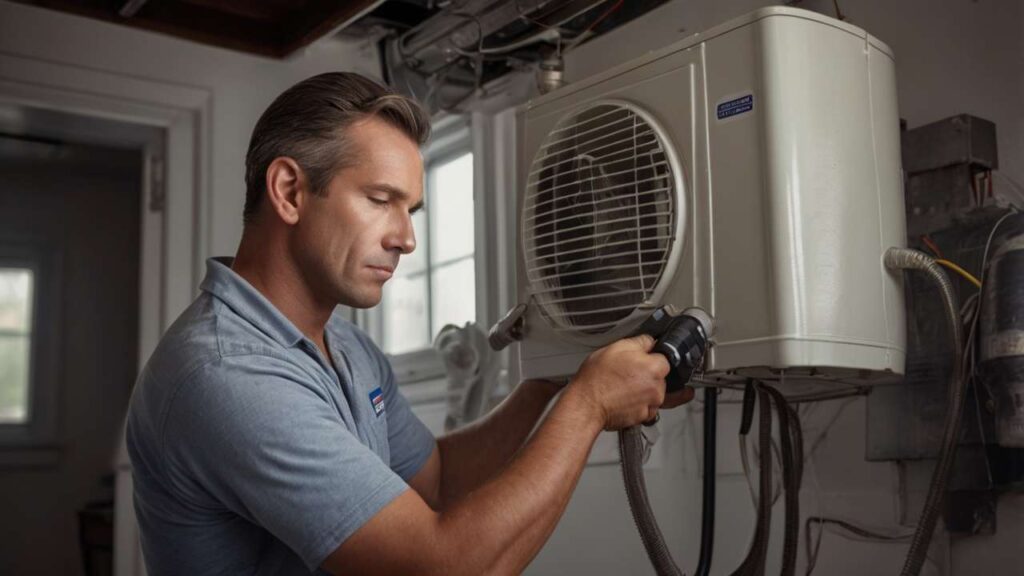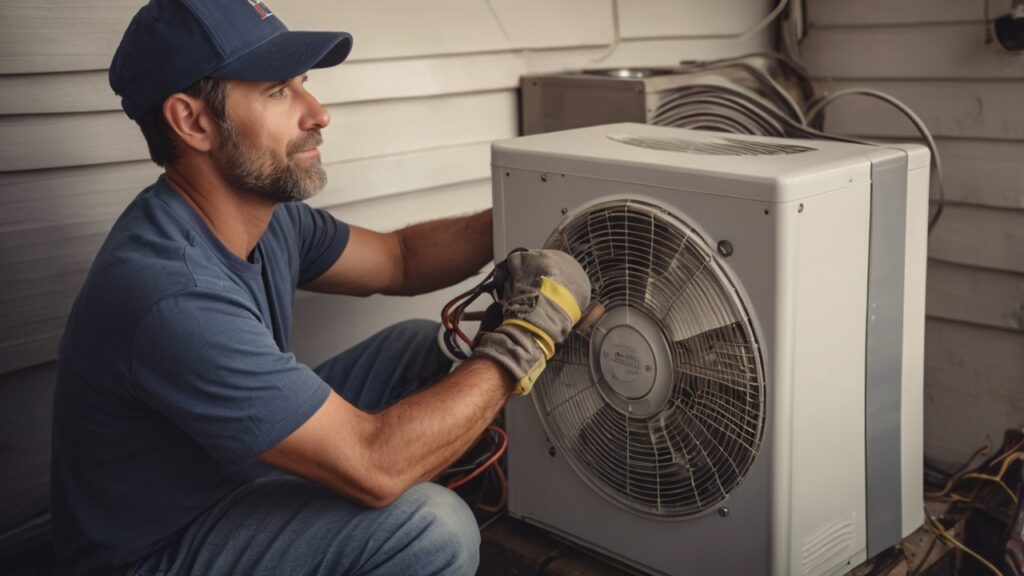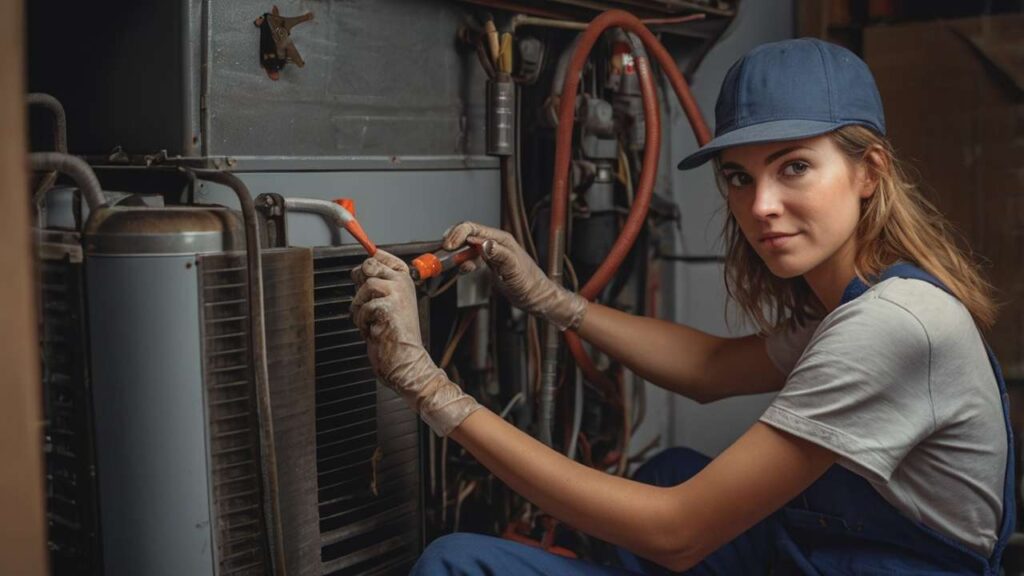It’s tempting, isn’t it? A noisy AC unit starts rattling, a furnace shows a tiny leak, or maybe the airflow feels a little weaker than usual. Many homeowners shrug it off and tell themselves, “I’ll call the technician later, it’s still working for now.” But here’s the truth: delaying even small HVAC repairs usually ends up being way more expensive and stressful than addressing them right away. The cost of deferred HVAC maintenance is not only financial—it can also put your family’s health, safety, and comfort at risk.
I’ve seen this firsthand. A friend ignored the burning smell from his furnace, assuming it was just dust burning off at the start of the season. Six weeks later? A $2,000 repair bill for a major electrical issue. That’s not rare—it’s common. And honestly, most of us don’t think about these systems until they stop working, but that “out of sight, out of mind” habit can be a financial trap.
This article is the wrap-up of our HVAC series and ties directly to the pillar post: 5 HVAC Companies Recommendations in North Carolina. It also connects back to the earlier guides:
- The Ultimate Guide to HVAC Preventive Maintenance
- Breathing Easier: Improving Indoor Air Quality with Your HVAC System
- The Efficiency Question: How to Choose the Right HVAC System for Your Home
- Beyond the AC: The Overlooked Role of Attic Fans in Home Comfort (Read here)
This one, Don’t Delay: Why Ignoring Small HVAC Issues Costs You More in the Long Run, closes the loop: showing how every small decision today affects tomorrow’s comfort and budget.
The Real Cost of Deferred HVAC Maintenance
A reliable HVAC system is like the heartbeat of a home. When it falters, everything feels off—your energy bills climb, your indoor air gets stuffy, and worst of all, you live in uncertainty. Ignoring signs of HVAC problems often means hidden damage builds up slowly. A simple $120 part replacement can snowball into a $1,200 full component repair.
Let’s take an example. That noisy AC unit you thought was just a loose screw? If left unchecked, it might damage the blower motor, misalign the fan, and wear down the belt. Fixing the whole assembly will cost 5–6 times more than addressing the rattle early.
Specialists like Mark Holland, a trusted HVAC technician with over 20 years of experience, often say: “Every sound, leak, or airflow change is your HVAC system whispering for help. Ignore those whispers, and they eventually start screaming in the form of costly breakdowns.”
Expensive HVAC Repairs and How They Start Small
Nobody wakes up to a $5,000 repair bill without warning. The warning signs were always there:
- Weak airflow that signals clogged ducts or a dying compressor.
- A leaky furnace showing condensation issues.
- Uneven heating pointing to a thermostat or zoning problem.
- The infamous noisy AC unit that hints at fan, coil, or refrigerant troubles.
All of these could be small issues if addressed promptly. But reactive maintenance—waiting until a total breakdown—always costs more than preventative fixes. The difference isn’t just in money. It’s in stress, time without heating or cooling, and even exposure to unsafe conditions.
One case study worth mentioning: A Raleigh homeowner ignored recurring short cycles in their system. By the time a technician was called, the unit had fried its circuit board and compressor. The replacement cost? $4,700. The cost of the early fix? Less than $200.
Why Small Issues Matter for HVAC System Lifespan
The HVAC system lifespan is not set in stone. Manufacturers might advertise 15–20 years, but neglect can cut that by half. Small problems accelerate wear and tear. Dirty filters make the blower work harder. Refrigerant leaks stress the compressor. Loose wiring increases fire risks.
It’s like running your car without oil changes. You wouldn’t expect that engine to last, so why treat your home’s largest mechanical system differently?
This is why preventative vs reactive maintenance isn’t just a phrase—it’s a philosophy. Preventative care adds years to your system’s life. Reactive repairs subtract them.
The Hidden Costs: Energy, Health, and Comfort
There’s another cost people often forget: wasted energy. A struggling HVAC system can consume 20–30% more electricity. That translates to hundreds of dollars every year. Plus, poor airflow and dirty ducts worsen allergies, asthma, and general indoor air quality.
One family I met in Durham admitted their child’s recurring cough improved dramatically after their old system was repaired and ducts cleaned. It wasn’t just about comfort anymore—it was about health. Ignoring maintenance had indirectly affected their child’s well-being.
So yes, why small issues matter isn’t just about dollars—it’s about your daily life.
Repair Processes and Tools: What Really Happens
People often wonder: what do technicians actually do during these repairs? Here’s a peek:
- AC Noise Fixes: Technicians check for loose panels, lubricate moving parts, replace worn fan belts, and tighten motor mounts. Common tools: nut drivers, socket sets, vibration pads.
- Leaky Furnace Repairs: A condensate pump may need replacement, PVC pipes might be resealed, or rusted drain pans swapped out. Tools: PVC cutters, sealant, replacement hoses.
- Duct Problems: Technicians use inspection cameras, duct sealant (mastic), and sometimes install dampers.
These small repairs might sound technical, but they’re quick, cost-effective, and handled daily by expert HVAC professionals. Compared to system replacements, they’re nothing.
Linking Back to the Bigger Picture
If you’ve followed the full HVAC series, you’ll see a consistent theme: each part of HVAC care connects to the next. Preventive maintenance, indoor air quality, system selection, and even attic fans—every choice stacks up. Delaying action undercuts all the benefits we’ve been talking about.
For a deeper dive into trusted providers, check out:
Future Topics Worth Exploring
We’ve covered the five pillars, but there’s more ground ahead. Future blog ideas could explore:
- Smart HVAC Technology Integration: How smart thermostats, zoning systems, and IoT devices are reshaping efficiency and convenience. Imagine linking your AC to your phone, adjusting temps before you get home—huge potential here.
- HVAC and Solar Power Connection: Pairing systems with renewable energy to slash utility bills while boosting sustainability. Many homeowners are curious but intimidated by setup costs.
- Emergency Preparedness with HVAC: What to do during blackouts, storms, or heatwaves when your system is vulnerable. This overlaps with safety planning too.
- Comparing HVAC Financing Options: A candid look at whether to rent, lease, or buy—since many families struggle with the upfront cost of new systems.
- DIY Maintenance Myths vs. Reality: A practical but cautionary piece on what homeowners can safely do themselves and what should always be left to professionals.
Each of these expands the conversation, keeping it practical, professional, and trustworthy.
FAQs
1. How do I know if small HVAC issues are serious?
If your unit is noisy, leaking, or cycling too often, those are clear early signs. Small issues matter because they often snowball. Calling a trusted HVAC expert for an inspection is always safer than waiting.
2. What’s cheaper: repair or replacement?
Early repairs are always cheaper. Replacements come into play when deferred HVAC maintenance has already shortened the system’s lifespan. Preventative maintenance delays that outcome for years.
3. Can ignoring HVAC issues affect my health?
Yes. Poor ventilation, dirty filters, and leaks can worsen asthma, allergies, and even mold exposure. Your HVAC system affects the air you breathe daily.
Final Thoughts
Here’s the bottom line: the cost of deferred HVAC maintenance is not worth it. From energy waste to expensive HVAC repairs and shortened lifespan, the risks far outweigh the short-term “savings” of delaying. Trusted, reliable, and expert care doesn’t just protect your wallet—it protects your home, health, and comfort.
If you found this article helpful, don’t keep it to yourself. Use the share buttons below and let your friends, neighbors, and family know why ignoring those “small” HVAC problems might be the most costly mistake they make this year.



